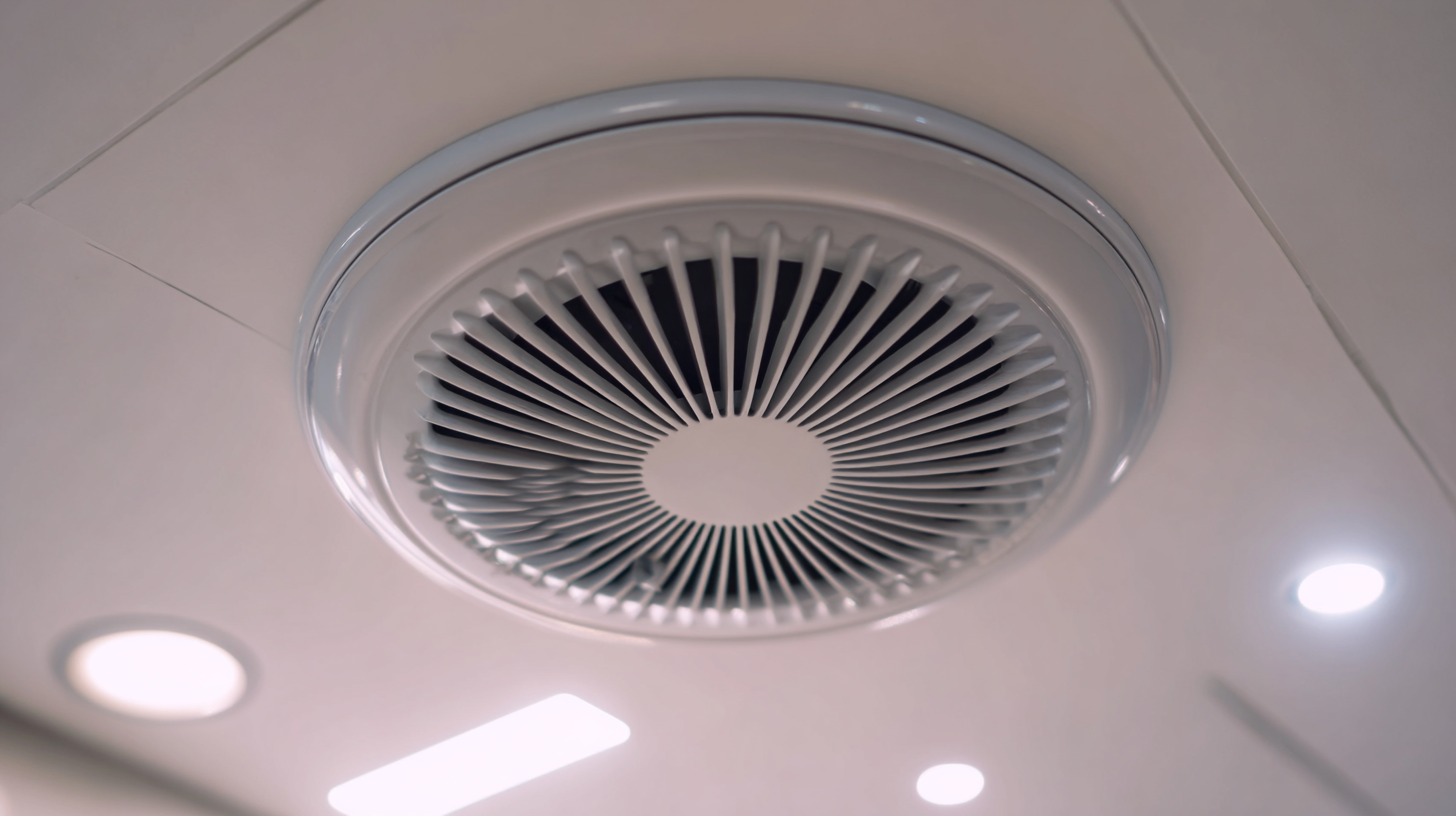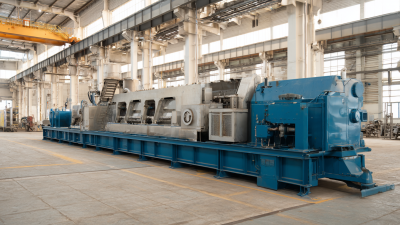Selecting the appropriate Disc Type Air Diffuser is essential for optimizing indoor air quality and ensuring energy efficiency in HVAC systems. According to industry reports, the right air diffusion strategy can improve airflow efficiency by up to 30%, ultimately influencing heating and cooling costs significantly. A study by the ASHRAE (American Society of Heating, Refrigerating and Air-Conditioning Engineers) revealed that improper diffuser selection could lead to increased energy consumption and occupant discomfort. Disk type air diffusers come in various configurations and designs, catering to diverse applications in commercial and residential spaces. Understanding the variables that affect the performance of these diffusers, such as room dimensions, ceiling height, and air distribution requirements, is critical for making an informed decision. Therefore, this guide aims to assist you in navigating the selection process of Disc Type Air Diffusers tailored to your specific environment and needs.

When selecting a disc type air diffuser for your space, it’s crucial to understand the variety of options available and their specific applications. Disc air diffusers are designed to distribute air evenly throughout an area, making them ideal for both commercial and residential settings. Depending on the required airflow and aesthetic preferences, you can choose from a range of styles such as ceiling-mounted, wall-mounted, or underfloor diffusers. Each type serves unique purposes; for instance, ceiling-mounted diffusers excel in large, open spaces like offices, while wall-mounted options may suit smaller rooms.

Tips: Consider the size and design of your room. A larger space may require multiple diffusers to maintain consistent airflow, while smaller areas can benefit from a single, strategically placed unit. Additionally, assess the ceiling height, as higher ceilings may need adjustable diffusers to direct airflow downwards effectively.
Another important factor is the material of the diffuser. Metal diffusers are typically more durable and offer a sleek look, while plastic options are lightweight and cost-effective. Matching the diffuser material with your room’s decor can enhance both functionality and aesthetics, ensuring a cohesive design throughout your space.
When selecting the appropriate disc type air diffuser for your space, it is essential to consider several key factors to ensure optimal performance and comfort. First, room size plays a crucial role; larger spaces may require multiple diffusers for adequate air distribution, as recommended by the American Society of Heating, Refrigerating and Air-Conditioning Engineers (ASHRAE), which suggests a minimum of one diffuser per 100 square feet. Additionally, ceiling height will influence the choice of diffuser size and style, with higher ceilings typically necessitating diffusers that can project air over longer distances.
Next, airflow rate is critical; it is advisable to choose diffusers that match the required airflow for the given space. As per industry reports, the desired air changes per hour can range from 4 to 8 for general office environments. Properly calculating the thermal load of the area via tools like Manual J or Manual D can assist in determining the HVAC requirements, ensuring that the installed diffusers work efficiently.
Tips: Always evaluate the noise levels of your chosen diffusers. According to the National Institute of Standards and Technology, noise levels should remain below 45 decibels to maintain a comfortable environment. Finally, consider the aesthetic of the diffuser; selecting a style that complements your space not only improves functionality but can also enhance the visual appeal of the room.

When selecting the appropriate disc type air diffuser for your space, assessing airflow requirements is crucial. Start by evaluating the dimensions and layout of the area you want to ventilate. Larger spaces typically require diffusers that can handle increased air volume, while smaller areas may need less airflow to maintain comfort. Consider the occupancy and usage of the space as well; spaces with higher occupancy rates, such as conference rooms or classrooms, demand more robust airflow to ensure adequate ventilation and maintain indoor air quality.
Next, analyze the desired air distribution pattern. Different activities within a space may require specific airflow strategies. For instance, areas with sensitive equipment may benefit from a more gentle and uniform airflow to avoid disruption, while spaces focused on energy efficiency may require diffusers that promote strategic airflow without excessive energy consumption. By understanding your specific airflow needs, you can select the right disc type air diffuser that maximizes comfort, efficiency, and effectiveness for your particular environment.
| Space Type | Airflow Requirement (CFM) | Recommended Disc Size (inches) | Material | Installation Height (feet) |
|---|---|---|---|---|
| Office Space | 300-600 | 12 | Aluminum | 8-10 |
| Retail Store | 400-800 | 14 | Steel | 10-12 |
| Warehouse | 600-1200 | 16 | Plastic | 12-20 |
| Hospital | 500-1000 | 14 | Stainless Steel | 8-10 |
| Educational Institution | 300-700 | 12 | Aluminum | 10-12 |
When selecting a disc type air diffuser, understanding the material and design variations is crucial. Disc air diffusers come in various materials such as plastic, metal, and fiberglass, each offering unique benefits. For instance, plastic diffusers are lightweight and resistant to corrosion, making them suitable for residential applications. Metal diffusers, often made from aluminum or steel, provide durability and a sleek aesthetic, making them popular in commercial spaces where aesthetics and longevity matter. Fiberglass diffusers, while less common, are appreciated for their insulation properties and low maintenance.
The design of disc air diffusers also plays an essential role in their functionality and appearance. Variations in design can affect airflow patterns, noise levels, and the overall efficiency of the HVAC system. Options include adjustable blades, which allow for customizable airflow directions, and fixed designs that provide a uniform distribution. Additionally, the choice of a circular or square diffuser can impact how well it integrates with a room's architecture. Therefore, when choosing a disc air diffuser, one must carefully consider both the material and design to ensure it meets the specific needs of the space while enhancing its overall aesthetic appeal.
When it comes to choosing the right disc type air diffuser for your space, proper installation and maintenance can significantly impact its performance. According to a report by the American Society of Heating, Refrigerating and Air-Conditioning Engineers (ASHRAE), a well-installed diffuser can enhance air distribution efficiency by up to 30%. Ensure that you position the diffuser at an optimal height and angle, typically around 7–9 feet from the floor for most commercial settings.
For optimal performance, regular maintenance of your air diffuser is essential. Dust and debris accumulation can restrict airflow and reduce efficiency. ASHRAE recommends a cleaning schedule every three to six months, depending on the environment. Use a soft brush or vacuum to remove dust, and check for any signs of corrosion or damage during maintenance.
**Tips:** Always assess the air pressure before installation, as improper pressure levels can lead to a noisy operation and inefficient air distribution. Additionally, consider investing in adjustable disc diffusers that allow for directional control of airflow, providing flexibility and comfort tailored to changing space needs.






